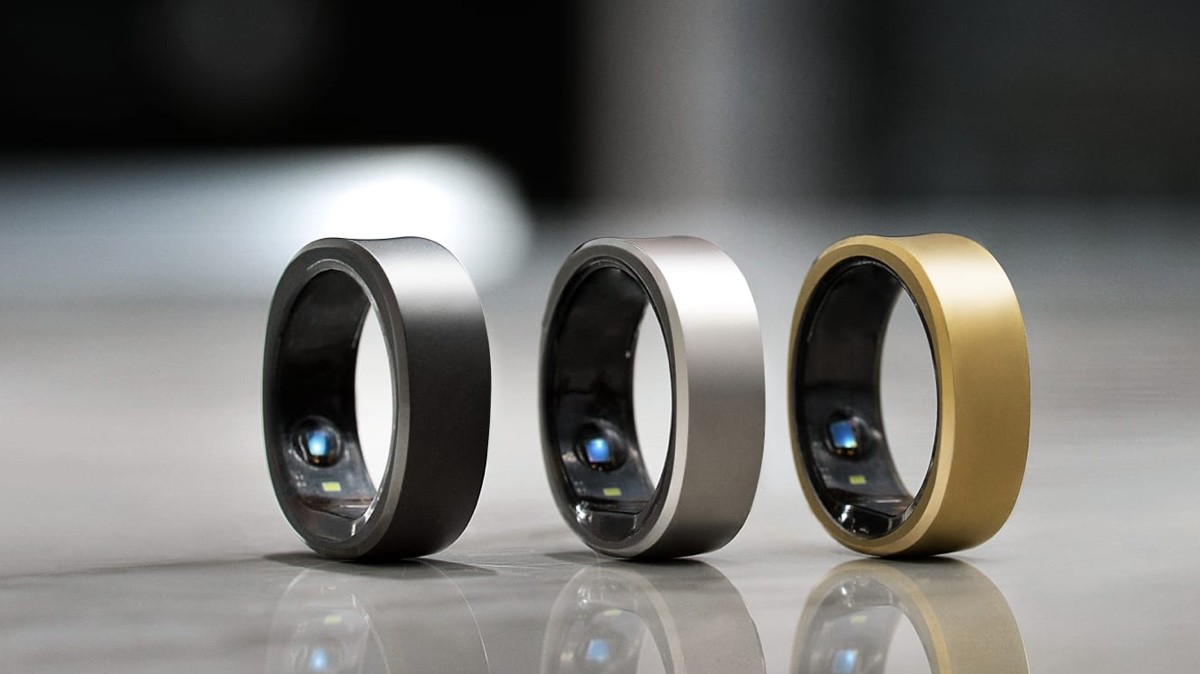Smart Rings And Fidelity: Would You Wear One?

Table of Contents
The Allure of Smart Rings for Fidelity Monitoring:
Smart rings, with their discreet design and advanced sensor capabilities, offer a unique approach to relationship monitoring, at least theoretically. Their subtle nature is a key selling point, unlike bulky GPS trackers or overtly obvious monitoring devices. Many are equipped with features that could, in principle, be used to track behavior relevant to infidelity, although this is far from foolproof.
- Discreet Monitoring: Unlike bulky GPS trackers, smart rings blend seamlessly into daily life. This discreet nature could potentially reduce the anxiety associated with overt monitoring, although this is subjective and depends heavily on the individual.
- Biometric Data: Some smart rings can track heart rate variability, potentially indicating stress or arousal. However, it's crucial to emphasize that this is not conclusive evidence of infidelity. Stress and arousal have countless potential causes, making this data unreliable for such a serious determination.
- Sleep Tracking: Changes in sleep patterns could be analyzed, potentially revealing unusual sleep disturbances that might accompany emotional distress related to relationship issues. Again, this is not definitive proof of infidelity and requires careful consideration of other contributing factors.
- Proximity Tracking (Limited): While not a primary feature of all smart rings, some utilize Bluetooth connectivity, potentially allowing for monitoring location and proximity to other individuals. However, this raises significant privacy concerns and is ethically problematic without explicit consent.
Ethical and Privacy Concerns of Smart Ring Fidelity Tracking:
While the technology presents certain possibilities, significant ethical and privacy concerns outweigh any perceived benefits. Using a smart ring for fidelity monitoring raises serious questions that cannot be ignored.
- Consent is Paramount: The use of any monitoring device without informed and enthusiastic consent is a clear violation of privacy and a betrayal of trust. This is a fundamental ethical breach.
- False Positives and Misinterpretations: Biometric data is inherently prone to misinterpretation. Stress or arousal can stem from a multitude of factors completely unrelated to infidelity, leading to potentially devastating misunderstandings and false accusations.
- Data Security and Breaches: Storing sensitive personal data on a smart ring presents a significant risk of hacking and data breaches. This sensitive information is vulnerable, and the consequences of a breach could be severe.
- Erosion of Trust: The very act of monitoring, regardless of the outcome, can severely damage the foundation of a relationship. It fosters suspicion and undermines the trust needed for a healthy partnership.
- Legal Ramifications: The use of tracking devices without consent can have serious legal consequences, depending on your location and specific circumstances. This is a legal gray area that should not be underestimated.
The Role of Communication and Trust in Relationships:
Technology is not, and should never be, a substitute for open communication and trust. Before considering any technological solution to relationship anxieties, couples should address their concerns openly and honestly.
- Strengthening Communication: Focusing on clear, honest conversations about anxieties and insecurities is paramount to building a healthy relationship.
- Building Trust: Establishing mutual trust and understanding is fundamental. Technology cannot magically build trust; it can only potentially reinforce or erode it.
- Professional Help: Couples therapy or relationship counseling can provide invaluable support and guidance for resolving relationship issues constructively and addressing underlying problems.
Alternatives to Smart Ring Fidelity Monitoring:
Instead of relying on potentially intrusive and unreliable technology, consider healthier methods for addressing relationship concerns.
- Open and Honest Communication: Have candid conversations about concerns and insecurities. This is the cornerstone of any strong relationship.
- Building Trust Through Actions: Show consistent commitment, reliability, and emotional support. Actions speak louder than any technology.
- Relationship Counseling: Seek guidance from a professional to navigate and overcome relationship challenges effectively.
Conclusion:
Smart rings and fidelity monitoring present a complex and ultimately flawed solution. While the technology might seem to offer discreet monitoring, the ethical and privacy concerns are overwhelming. Building and maintaining a healthy relationship relies on open communication, mutual trust, and directly addressing any issues. Instead of focusing on potentially harmful technological solutions like smart rings, invest in honest dialogue, healthy relationship practices, and consider professional support when needed. A strong relationship is built on trust, not surveillance. Don't let the allure of smart ring technology distract from the importance of genuine connection and effective communication. Choose open communication and trust over technological surveillance.

Featured Posts
-
 Tragedy Strikes Familys Heartfelt Tribute To Young Manchester United Fan Poppy
May 02, 2025
Tragedy Strikes Familys Heartfelt Tribute To Young Manchester United Fan Poppy
May 02, 2025 -
 Nigel Farages Whats Apps A Crisis Of Integrity For The Reform Party
May 02, 2025
Nigel Farages Whats Apps A Crisis Of Integrity For The Reform Party
May 02, 2025 -
 Christina Aguileras New Photoshoot Fans React To Altered Image
May 02, 2025
Christina Aguileras New Photoshoot Fans React To Altered Image
May 02, 2025 -
 Measles Surge Prompts Increased Us Vaccine Oversight
May 02, 2025
Measles Surge Prompts Increased Us Vaccine Oversight
May 02, 2025 -
 Is Christina Aguilera Aging Backwards Her New Video Sparks Debate
May 02, 2025
Is Christina Aguilera Aging Backwards Her New Video Sparks Debate
May 02, 2025
